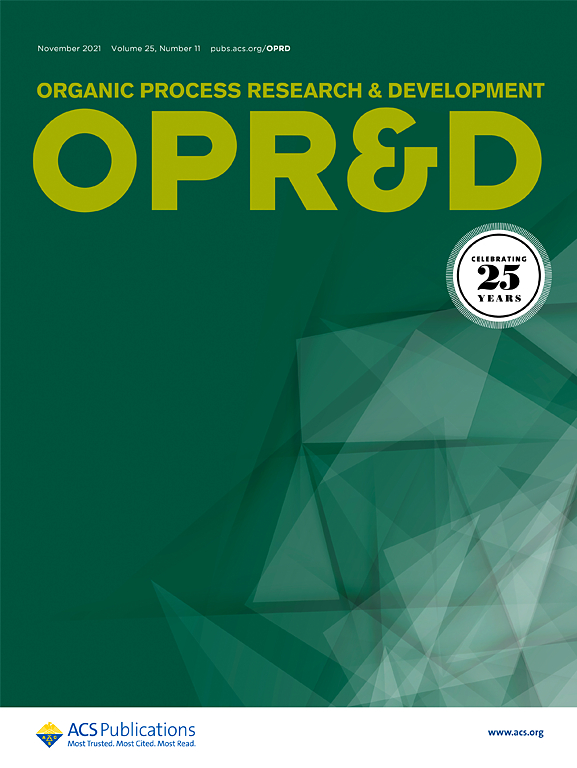一种GCS抑制剂的工艺开发,包括千克级Lossen重排的演示
IF 3.1
3区 化学
Q2 CHEMISTRY, APPLIED
引用次数: 11
摘要
一种小分子正在被研究作为葡萄糖神经酰胺合成酶(GCS)抑制剂用于法布里病的潜在用途。为了支持临床前活动,开发了四步合成方法并用于制备公斤数量的原料药。新路线的特点是可扩展的cdi介导的Lossen重排,取代了原来路线中使用的危险叠氮化物化学。本文章由计算机程序翻译,如有差异,请以英文原文为准。

Process Development of a GCS Inhibitor Including Demonstration of Lossen Rearrangement on Kilogram Scale
A small molecule was under investigation as an inhibitor of glucosylceramide synthase (GCS) for potential use in Fabry disease. To support preclinical activities, a four-step synthesis was developed and used to prepared kilogram quantities of the drug substance. The new route features a scalable CDI-mediated Lossen rearrangement as a substitution for hazardous azide chemistry that was employed in the original route.
求助全文
通过发布文献求助,成功后即可免费获取论文全文。
去求助
来源期刊
CiteScore
6.90
自引率
14.70%
发文量
251
审稿时长
2 months
期刊介绍:
The journal Organic Process Research & Development serves as a communication tool between industrial chemists and chemists working in universities and research institutes. As such, it reports original work from the broad field of industrial process chemistry but also presents academic results that are relevant, or potentially relevant, to industrial applications. Process chemistry is the science that enables the safe, environmentally benign and ultimately economical manufacturing of organic compounds that are required in larger amounts to help address the needs of society. Consequently, the Journal encompasses every aspect of organic chemistry, including all aspects of catalysis, synthetic methodology development and synthetic strategy exploration, but also includes aspects from analytical and solid-state chemistry and chemical engineering, such as work-up tools,process safety, or flow-chemistry. The goal of development and optimization of chemical reactions and processes is their transfer to a larger scale; original work describing such studies and the actual implementation on scale is highly relevant to the journal. However, studies on new developments from either industry, research institutes or academia that have not yet been demonstrated on scale, but where an industrial utility can be expected and where the study has addressed important prerequisites for a scale-up and has given confidence into the reliability and practicality of the chemistry, also serve the mission of OPR&D as a communication tool between the different contributors to the field.

 求助内容:
求助内容: 应助结果提醒方式:
应助结果提醒方式:


